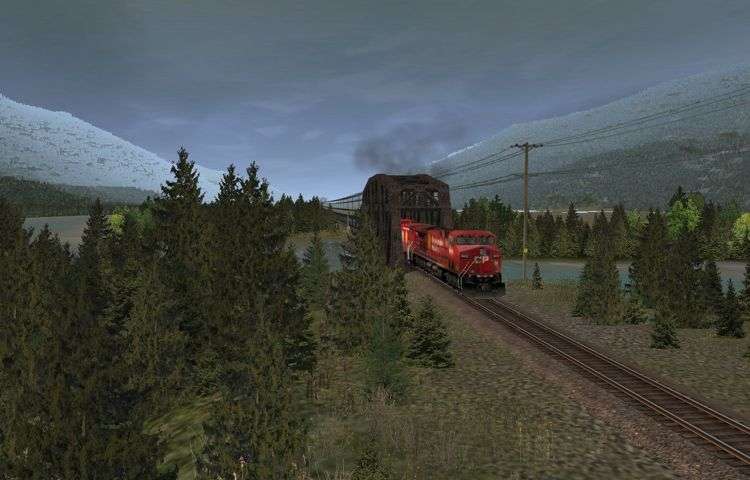Construction of the Canadian Pacific Railway (CPR), its Mountain Subdivision, and the decade following its completion in 1885 is perhaps the most interesting period in the railway’s history.
The section through the Kicking Horse Pass in the Rockies and Rogers Pass in the Selkirks was the last section to be completed. By the time of its construction the CPR was running out of money. So this section, in particular, was built quickly and inexpensively to get the railway into a revenue generation position as soon as possible. Blasting, tunneling, cuts and fills were kept to a minimum. As steel was expensive and not readily available and masonry construction time consuming, the abundance of timber along the route was used instead for construction including some massive trestles.
To represent this period in the CPR’s history I have chosen the year 1887 to model (MBC 1887 TS 12 route). The year 1887 allows me to model the spectacular wooden trestles, which deteriorated rapidly and thus had to be replaced within the decade following the completion of construction.
This website has been established to allow me to post pictures along with some of the history I have had access to that supports my interpretation of the route in this era. For additional information visit:
http://www.doug56.net/MBC_1887_TS12_Route/
I will also compare the route with the year 2010, for which the Trainz route in early fall (Trainz 2010 and TR12) is already available on my website. Once the 1887 version of the route is complete, it will also be posted my website.
Cayden

The abundant timber along the route of the railway through the Rocky and Selkirk mountains was used to construct the railway thus saving on the cost of construction.

In the 1880s there was little in the way of mechanical equipment available so most of the construction on the railway was done by hand. Here a donkey engine is being used to load flat cars with freshly cut timber.

A tote road was constructed in advance of the railway so that construction could occur simultaneously at several locations. Bridges, tunnels, fills and cuts were constructed before the grading and subsequently the track-laying crews arrived.
The section through the Kicking Horse Pass in the Rockies and Rogers Pass in the Selkirks was the last section to be completed. By the time of its construction the CPR was running out of money. So this section, in particular, was built quickly and inexpensively to get the railway into a revenue generation position as soon as possible. Blasting, tunneling, cuts and fills were kept to a minimum. As steel was expensive and not readily available and masonry construction time consuming, the abundance of timber along the route was used instead for construction including some massive trestles.
To represent this period in the CPR’s history I have chosen the year 1887 to model (MBC 1887 TS 12 route). The year 1887 allows me to model the spectacular wooden trestles, which deteriorated rapidly and thus had to be replaced within the decade following the completion of construction.
This website has been established to allow me to post pictures along with some of the history I have had access to that supports my interpretation of the route in this era. For additional information visit:
http://www.doug56.net/MBC_1887_TS12_Route/
I will also compare the route with the year 2010, for which the Trainz route in early fall (Trainz 2010 and TR12) is already available on my website. Once the 1887 version of the route is complete, it will also be posted my website.
Cayden

The abundant timber along the route of the railway through the Rocky and Selkirk mountains was used to construct the railway thus saving on the cost of construction.

In the 1880s there was little in the way of mechanical equipment available so most of the construction on the railway was done by hand. Here a donkey engine is being used to load flat cars with freshly cut timber.

A tote road was constructed in advance of the railway so that construction could occur simultaneously at several locations. Bridges, tunnels, fills and cuts were constructed before the grading and subsequently the track-laying crews arrived.





























